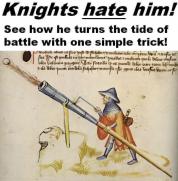Now THAT could be really interesting! I was reminded of this guy that built a test fixture for measuring force curves of triggers. https://www.youtube.com/watch?v=0YJ0hX9N0aM
It would be interesting to quantify the effect of things like the profile and depth of trigger guard indentations on the force curve. Also, effect on the force curve from torquing the gun laterally (such as from a botched or clumsy draw) during the draw on a leather holster. Maybe a bunch of stuff no one cares about, but I find it interesting.
That video above is a great example, even if off-topic. In the past, I've tried to quantify to people why the Ghost Edge is my favorite Glock connector. I don't care about having an extremely low pull weight, but it's more to do with how the force curve is smoothed and the "hitch" in the pull is reduced. For me at least, less distraction and more consistency.
Maybe this is just "gamer" stuff, and maybe no one cares... but this is PF! Might as well geek out over some obscure aspect of holsters, because what other forum is going to?!





 Reply With Quote
Reply With Quote


